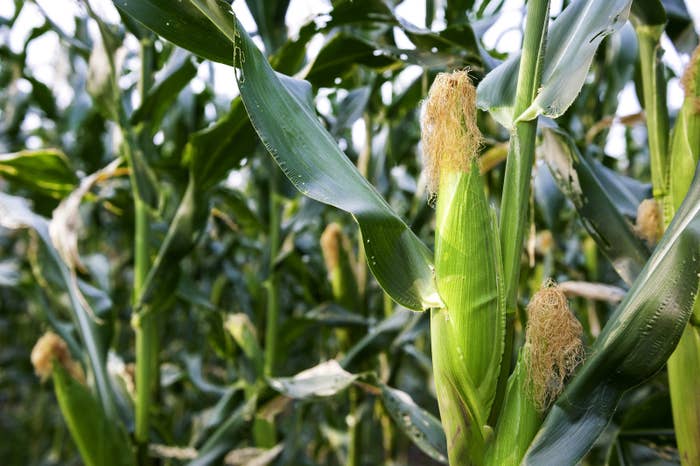
A powerful House Republican wants the world to stop freaking out about carbon emissions and instead focus on the supposed benefits of climate change.
In a bizarre editorial published this week, Rep. Lamar Smith from Texas praised the continued use of oil, gas, and coal power, and claimed that the “carbon enrichment” it produces is good for everything from plant diversity and habitats to crop production and international trade.
Much of the science described in Smith’s piece is wrong or misleading, scientists say.
“It is an extremely unbalanced assessment and has many things wrong,” Kevin Trenberth, a senior scientist at the National Center for Atmospheric Research, wrote in an email to BuzzFeed News.
“Representative Smith’s comments extend beyond nonsense into what can only be called lies,” said Howard Frumkin, an environmental and occupational health sciences professor at the University of Washington.
Smith did not respond to a request to comment.
Smith is a prominent climate skeptic in Congress. As chairman of the House Committee on Science, Space, and Technology, he has attacked federal climate research and tried to subpoena scientists for their emails. He’s also supported budget cuts to climate work, defended Exxon Mobil against climate probes from state attorneys general, and endorsed President Donald Trump’s decision to pull the US out of the Paris climate agreement.
In early May, Smith led a group of US representatives on a private science tour of US research facilities in the melting Arctic. Some scientists involved in the trip expressed optimism about how it went. Rep. Jerry McNerney, a California Democrat, even said he had productive conversations about climate issues with Smith during the tour.
But Smith’s new editorial, published on the news site for the conservative think tank the Heritage Foundation, shows he’s still highly skeptical of the dangers posed by man-made climate change. His policy arguments — defending the use of fossil fuels and attacking regulations aimed at reducing US carbon emissions — are debatable, if extreme. But his science claims are largely false:
1. No, carbon dioxide levels are not increasing slowly.
Smith wrote that “the amount of carbon dioxide in the atmosphere is gradually increasing.”
CO2 levels are actually rising at a faster clip than ever before. The spike in atmospheric carbon observed in recent decades at research sites such as the Mauna Loa Observatory in Hawaii, for example, previously occurred over longer periods, such as tens of thousands to millions of years.
2. No, higher CO2 levels will not cause most plants — and especially not major crops — to grow more.
Smith wrote that “a higher concentration of carbon dioxide in our atmosphere would aid photosynthesis, which in turn contributes to increased plant growth,” and then claimed that “carbon enrichment helps produce more resilient food crops, such as maize, soybeans, wheat and rice.”
Agriculture, forestry, and other climate experts shook their heads at this one. Through photosynthesis green plants of all kinds do soak up carbon dioxide in order to grow. But temperatures and water availability play a bigger role in plant survival, and more CO2 brings with it warmer and often drier conditions that threaten plants.
Although some plants are expected to thrive in a warming world, they “tend to be weeds far more than food crops and forest canopy,” Frumkin said. Many studies, he added, have shown that climate change actually tends to decrease crop production. “Any positive effect of carbon dioxide,” he said, “is swamped by such effects as erratic weather, heat, weeds, and pests.”
3. Yes, the world is greening, but the verdict is still out on whether that’s good.
According to Smith, “another benefit of increased carbon dioxide in the atmosphere is the lush vegetation that results.” Up to 50% of the world’s most vegetated areas are getting greener, and climate change is largely driving this shift, Smith wrote, citing the results of this 2016 Nature Climate Change study.
That’s true, said climate and economics researcher Amir Jina of the University of Chicago, “but the interpretation is misleading.” Greening, he explained, is not necessarily a sign of a healthy planet. “It is extremely important to remember that temperature increases lag behind CO2 increases, so the warming we will experience from the CO2 we release today may be a decade or more away. This is one other reason to see some greening now, but to not take that as an unqualified positive sign.”
4. Yes, decreasing Arctic sea ice presents shipping opportunities. It could also amplify global warming.
Smith named decreasing Arctic sea ice as an example of “beneficial changes to the earth’s geography” tied to a warming world.
It’s true that decreasing sea ice is already creating new opportunities for commercial shipping in the Arctic. But because the ice helps reflect the sun’s rays, leading to cooling, a decline in ice could lead to more warming. Shifts in sea levels could also impact existing ocean currents and jet-stream patterns.
5. No, scientists have not ignored studying or talking about climate change benefits.
“The benefits of a changing climate,” Smith wrote, “are often ignored and under-researched.”
Actually, scientists have repeatedly examined both the risks and benefits associated with a changing climate. Although it’s different from place to place, the risks generally win out.
Take a recent study in the journal Science analyzing US climate impacts by county. It shows that “there will be both winners and losers from climate change,” said Jina, one of the study’s authors. Although some northern US counties could see climate-linked economic boosts, Jina and others found the country as a whole is expected to suffer. What’s more, the poorest US counties — mostly located in southern states, including Smith’s home state of Texas — face the worst climate risks.
More examples of the good and bad climate impacts expected across the US are described in the National Climate Assessment, a Congress-mandated report that’s periodically updated, and involves hundreds of federal and outside researchers.
